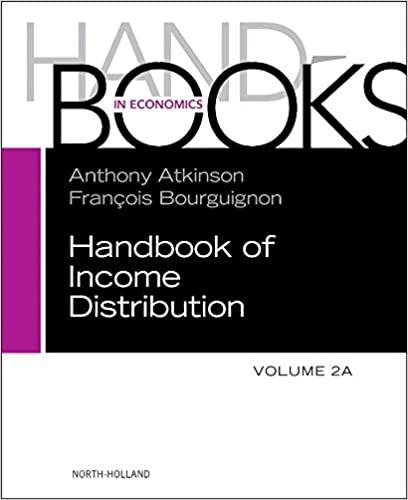Question
Respondents are asked to score how frequently they use the different capital budgeting techniques on a scale of 0 to 4 (0 meaning never, 4
Respondents are asked to score how frequently they use the different capital budgeting techniques on a scale of 0 to 4 (0 meaning "never", 4 meaning "always"). In many respects, the results differ from previous surveys, perhaps because we have a more diverse sample. An important caveat here, and throughout the survey, is that the response represents beliefs. We have no way of verifying that the beliefs coincide with actions.
Most respondents select net present value and internal rate of return as their most frequently used capital budgeting techniques. 74.9% of CFOs always or almost always (responses of 4 and 3) use net present value (rating of 3.08). 75.7% of respondents always or almost always use internal rate of return (rating of 3.09). The hurdle rate is also popular.
The most interesting results come from examining the responses conditional on firm and executive characteristics. Large firms are significantly more likely to use NPV than small firms (rating of 3.42 versus 2.83). There is no difference in techniques used by growth and nongrowth firms. Highly levered firms are significantly more likely to use NPV and IRR than firms with small debt ratios. This is not just an artifact of firm size. In unreported analysis, we find a significant difference between high and low leverage small firms as well as high and low leverage large firms. Interestingly, highly levered firms are also more likely to use sensitivity and simulation analysis. Perhaps because they are required in the regulatory process, utilities are more likely to use IRR and NPV and perform sensitivity and simulation analyses. We find that CEOs with MBAs are more likely than non-MBA CEOs to use net present value - but the difference is only significant at the 10% level.
Firms that pay dividends are significantly more likely to use NPV and IRR than are firms that do not pay dividends. This result is also robust to our analysis by size. Public companies are significantly more likely to use NPV and IRR than are private corporations. As the correlation analysis indicates in Table 1, many of these attributes are correlated. For example, private corporations are also smaller firms.
Other than NPV and IRR, the payback period is the most frequently used capital budgeting technique (rating of 2.53). This is surprising because financial textbooks have lamented the shortcomings of the payback criteria for decades. (Payback ignores the time value of money and cash flows beyond the cutoff date; the cutoff is usually arbitrary.) Small firms use the payback period (rating of 2.72) almost as frequently as they use NPV or IRR. In untabulated analysis, we find that among small firms, CEOs without MBAs are more likely to use the payback criterion. The payback is most popular among mature CEOs (rating of 2.83). For both small and large firms, we find that mature CEOs use payback significantly more often than younger CEOs in separate examinations. Payback is also frequently used by CEOs with long tenure (rating of 2.80). Few firms use the discounted payback (rating of 1.56), a method that eliminates one of the payback criteria's deficiencies by accounting for the time value of money.
It is sometime argued that the payback approach is rational for severely capital constrained firms: if an investment project does not pay positive cash flows early on, the firm will cease operations and therefore not receive positive cash flows that occur in the distant future, or else will not have the resources to pursue other investments during the next few years (p. 405, Weston and Brigham, 1981). We do not find any evidence to support this claim because we find no relation between the use of payback and leverage, credit ratings, or dividend policy. Our finding that payback is used by older, longer tenure CEOs without MBAs instead suggests that lack of sophistication is a driving factor behind the popularity of the payback criterion.
A number of firms use the earnings multiple approach for project evaluation. There is weak evidence that large firms are more likely to employ this approach than are small firms. We find that a firm is significantly more likely to use earnings multiples if it is highly levered. The influence of leverage on the earnings multiple approach is also robust across size (i.e., highly levered firms, whether they are large or small, frequently use earnings multiples).
In summary, compared to previous research, our results suggest increased prominence of net present value as an evaluation technique. In addition, the likelihood of using specific evaluation techniques is linked to firm size, firm leverage and CEO characteristics. In particular, small firms are significantly less likely to use net present value. They are also less likely to use supplementary sensitivity and VaR analyses. The next section takes this analysis one step further by detailing the specific methods firms use to obtain the cost of capital, the most important risk factors, and a specific capital budgeting scenario.
a. List the different capital budgeting techniques used in the survey. Describe each technique using plain English.
b. What are the most popular capital budgeting techniques?
c. What are the key characteristics of firms that use NPV and IRR for their capital budgeting?
d. Why is the payback period so popular among a certain type of companies?
e. What kind of firm is likely to use earnings multiple as a method of capital budgeting?
Step by Step Solution
There are 3 Steps involved in it
Step: 1

Get Instant Access to Expert-Tailored Solutions
See step-by-step solutions with expert insights and AI powered tools for academic success
Step: 2

Step: 3

Ace Your Homework with AI
Get the answers you need in no time with our AI-driven, step-by-step assistance
Get Started


